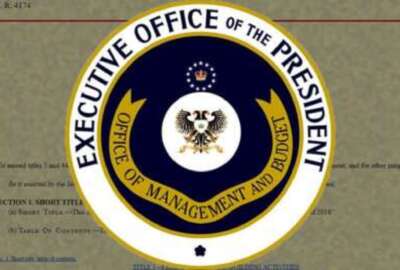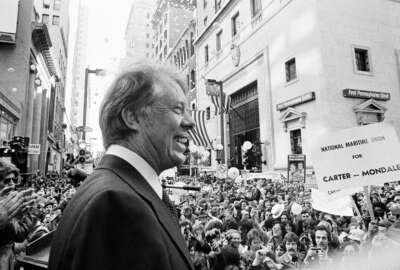OPM’s Shriver sees skills-based assessments, shared certificates as federal hiring strategies ripe for expansion
As efforts of the President’s Management Agenda come to a close, Biden administration officials are sharing signs of an improving federal hiring process.
Office of Personnel Management Acting Director Rob Shriver sees several areas of opportunity to build on the forward momentum to reform federal hiring and retention.
During the Biden administration, the President’s Management Agenda focused one of its key priorities on strengthening and empowering the federal workforce. Though the efforts of the PMA are now coming to a close, administration officials pointed to promising signs of an improving federal hiring process.
For example, the Biden administration has taken steps to keep the ball rolling on a push toward skills-based hiring. In April, the White House announced plans to transition the government’s primary job series for federal IT specialists away from college degree requirements over the next year.
“This really picked up on an initiative from the prior administration, and we’ve been grinding through the implementation of that,” Shriver said in an interview with Federal News Network at a Dec. 4 White House event. “But there are also a lot of challenges to implementing true skills-based hiring.”
The effort to move toward skills-based hiring began as a federal workforce initiative in 2020, during the first Trump administration. At the time, Trump’s executive order urged agencies to prioritize the actual skills of job applicants over college degrees in the federal hiring process.
But it has still taken several years for those efforts to take root. Now for federal IT jobs, OPM set a summer 2025 deadline to fully move the 2210 job series to skills-based hiring assessments. The 2210 series consists of nearly 100,000 jobs, representing most technical hires across the federal government.
Additionally, the number of skills-based assessments that agencies are using has increased by more than 2.5 times in the last four years, Shriver said during the Dec. 4 White House event.
In Congress, lawmakers have also been pushing forward on bipartisan efforts to make skills-based federal hiring more common. Efforts to codify skills-based assessments are included in the Chance to Compete Act, which passed the House in 2023. After clearing the Senate Homeland Security and Governmental Affairs Committee earlier this year, the companion bill was placed on the Senate’s legislative calendar on Dec. 2, opening the Chance to Compete Act up to a possible floor vote.
Building on the current momentum for skills-based hiring in the federal IT space, Shriver said it would be possible to “learn lessons, and pick up and move further across other occupations.”
Expanding early-career talent recruitment
For the federal workforce, another area of emphasis over the last several years has been on improving hiring of early-career talent, such as federal interns and recent graduates.
In April, for example, OPM updated and finalized the regulations for the Pathways Program, aiming to open the doors to early-career candidates from more diverse backgrounds. That includes individuals who have completed career or technical education programs, like the Peace Corps, AmeriCorps, Job Corps and Registered Apprenticeships, but who might not have a college degree.
“Those are good programs that lead to talent that the federal government needs to be recruiting,” Shriver said. “That’s not really a partisan issue — it’s about making sure that as people become retirement eligible and leave the government, that there are folks ready and good pipelines to bring them in.”
Under the new Pathways regulations, federal interns also now have lower requirements for converting into full-time federal positions, and agencies will have options to potentially pay Pathways participants higher salaries.
As a result of the growing focus on early-career talent, Shriver said there are early signs of renewed interest from young job seekers. Over the last couple of years, the share of the federal workforce under the age of 30 has increased by 13%, the Office of Management and Budget reported in April. Between fiscal 2022 and 2023, the number of federal interns also increased by 33%.
During the Dec. 4 event, Shriver credited the improvements in early-career talent numbers in part to the increased prioritization of federal internship opportunities and other pipelines for younger employees.
Easing federal hiring workloads
In the last several years, OPM has also worked with agencies to encourage them to take advantage of strategies that can ease the often burdensome federal recruitment process for hiring managers and job applicants.
For instance, agencies have begun more frequently using shared certificates and pooled hiring opportunities. Shared certificates let one agency share a list of qualified but unhired federal job candidates with other agencies looking to recruit for the same position. Pooled hiring lets multiple agencies hire candidates off of a single job announcement. Both strategies have been shown to reduce burdens on federal HR staff and hiring managers.
Shriver said OPM has been working on the infrastructure to support agencies that are looking to implement the hiring practices more often. In December 2023, OPM launched a “talent pools” portal on USAJobs, where hiring managers can either post or search for existing shared certificates.
Many of the hiring strategies are also included in an August memo on the federal hiring experience, which centers on methods for improving the recruitment process for hiring managers, HR staff and federal job applicants.
The initiatives in the joint OPM and OMB memo are “meant to make the hiring process more efficient — meant to reduce barriers for qualified applicants to get in and be able to compete for government jobs,” Shriver said. “I think this is an issue that administrations of both parties have worked on over several years to try to make the federal hiring process more efficient and have better results.”
Moving forward, Shriver expressed hope for the future of the federal workforce and encouraged employees to take things “one day at a time.”
“My biggest hope for the federal workforce moving forward is that we do a better job of explaining to the American people how the work that these hardworking, dedicated career civil servants do every day connects to their daily lives — because what federal employees do day in and day out is quietly, behind the scenes, serving the American people,” Shriver said. “My hope is that that dedication, that commitment, that service, is understood and recognized by the American public. And in order for that to happen, we need to both continue to improve the customer experience, continue to build strong relationships in the communities around the country, and tell the story about what the federal workforce does.”
Copyright © 2025 Federal News Network. All rights reserved. This website is not intended for users located within the European Economic Area.
Drew Friedman is a workforce, pay and benefits reporter for Federal News Network.
Follow @dfriedmanWFED






